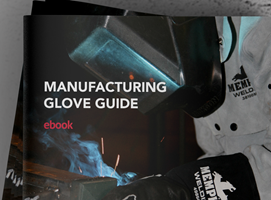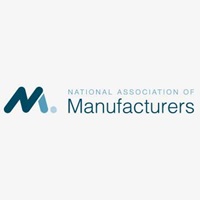28 Nov 11/28/2017
How to Choose the Right Gloves for Your Manufacturing Work
You are aware that gloves provide vital protection from hand injuries in the workplace. You might know that gloves are also used for providing product protection, ensuring the quality of products being manufactured or handled. Given that gloves serve an important purpose, it is critical you and your employees wear the correct gloves.
In that search, you have come to the right place. MCR Safety has been manufacturing gloves for four decades. We currently manufacture and supply users with over 1,000 different types of gloves. With insight gained over the years, we have prepared this five-step checklist to help you choose the right gloves.
1) Assess the Application
 Assess the application being performed by workers, which includes material being handled. Within the Manufacturing Industry, there are literally endless applications workers perform: Automotive Assembly, Glass Handling, Sheet Metal Handling, Material Handling, Small Part Handling such as handling Nuts/Bolts, Steel/Metal Rolling, Wiring, and Heavy Material Fabrication.
Assess the application being performed by workers, which includes material being handled. Within the Manufacturing Industry, there are literally endless applications workers perform: Automotive Assembly, Glass Handling, Sheet Metal Handling, Material Handling, Small Part Handling such as handling Nuts/Bolts, Steel/Metal Rolling, Wiring, and Heavy Material Fabrication.
We have only covered a handful of the applications workers perform. The key principle here is to recognize that every job is different and will most likely require a different glove. There isn’t a one-all glove that your entire company can wear.
Here are several reasons each application may require a different glove:
Dexterity
Dexterity can be a vital factor if the worker is handling small parts. That, in turn, means that you will need lighter weight materials to increase sensitivity and flexibility. Yet, you will also have to balance that against the hazard protection requirements present in each specific task.
Fit and Comfort
Gloves need to fit and be comfortable if your workers are actually going to wear them. In fact, you are not really going to know what works best for you and your application until you put the gloves on your hands and get to work. Evaluating gloves should factor in both fit and comfort, just as highly as assessing the necessary overall protection needed.
Grip
If an object is oily or wet, it could easily slip from your grasp. This poses yet a different type of hazard: dropping objects, damaging equipment, or even injuring workers. In this case, coatings on the fingers and palm can come into play, increasing one’s gripping ability. For objects that are oily, Breathable Nitrile Foam coatings are recommended. Utilize MCR Safety’s Glove Section for filtering the Polymer best suited to your needs.
2) Determine the Hazard
The second step is to review the overall hazards involved. OSHA has created an excellent tool for helping in this area, OSHA Job Hazard Analysis. This will help you know where to begin and how to identify workplace hazards.
Here are some common hazards that we know gloves address across the manufacturing industry:
Physical Hazards/Cut Hazards
This assessment needs to consider the exposure to sharp objects, including abrasions and punctures. Some glove materials are excellent in protecting against abrasions but offer limited protection from cut hazards. In addition, consider where abrasions and punctures are most likely to occur: fingers, palm, or top of hand. Try our Cut Score Search Tool to find just the right glove based on abrasion, tear, cut, and puncture.
Chemical Exposure
Will you encounter general liquids or harsh industrial chemicals? Will this entail brief exposures or will your hands be submerged in the chemicals? The chemical’s Material Safety Data Sheets can offer further insight into the protection needed. To find just the right match for the chemicals you are dealing with, try our Glove Permeation Guide.
Temperature
Heat or cold temperature protection may also be required. This may mean that insulated gloves are needed. Consider reviewing the most recent Insulated Glove brochure. We offer insulated gloves for both cold and hot conditions, along with Hot Mill gloves for the hottest conditions.
3) Focus on Job Specifics
Based on the above information realized in step 1 and 2, this step should be rather seamless and easy. In this step, focus more on the specifics surrounding each identified hazard. For example, if cut resistance is required, what is the ANSI/ISEA 105-2016 cut level needed? It is up to each company to determine what specific protection levels are needed for PPE worn.
We can assist in this area by making recommendations for each specific application. MCR Safety’s 360 Protection Program has had overwhelming positive feedback from end-users, due to the comprehensive selection process and the way it emphasizes direct and indirect cost savings, productivity, and risk reduction.
MCR Safety further distinguishes itself by maintaining the only ISD 17025 accredited lab in North America. Our ITC Innovations Technology center enables us to monitor glove quality, support Research & Development of new products and conduct competitor evaluations. Our ITC offers free of charge testing for Cut, Abrasion, Puncture, and Conductive Heat. Reach out to us if you need specific data for your current gloves used or if you want someone to provide a 360 assessment.
4) New Glove Requirements
Consider what the potential new glove needs to address, which is most likely what the current glove is not offering. Does the current glove provide the appropriate protection? If not, what needs to be changed or improved?
Examples Include:
- What are the wear areas? If there is wear out in the thumb crotch area, a glove like the N9676DT may be needed.
- How long do the current gloves last? (In hours, days, or weeks.) What is the monthly consumption in pairs?
- What is your current costs per pair?
These three questions revolve around a core business topic, costs. Most every company realizes operational expenses impact the bottom line. This realization leads many companies down the wrong road, purchasing gloves based solely on price.
However, if total cost savings can be realized due to less gloves used with a higher quality glove, one should act on this decision. An example of this is within the Oil Industry, as this industry over the past decade has accepted higher quality gloves with back-of-hand protection, such as the HV100 This has led to employees being able to wear the same glove for an entire work shift, drastically reducing injuries and helping reduce overall glove costs.
It is important to recognize why you purchase gloves in the first place: protecting your employees from hand injuries. However, not all companies will embrace a safety culture, ensuring the best PPE is worn. Even if a company lacks this culture, most all will recognize the costs realized for Workers Compensation. Ongoing hand injuries, which can easily cost up to $36,000, will increase your companies insurance premiums. Make sure the PPE worn is the optimal glove style an employee can wear for their specific work application.
5) Final Considerations
Care and Disposal
You will need to regularly inspect your gloves to avoid protection failure. It is also a good idea to establish a regular change out procedure. Once the gloves are damaged or worn out, you’ll need to dispose of them properly.
In addition, if your company implements a laundering program, proper laundering procedures should be recognized. We offer laundering guides for many of the materials used in the Product Guide section.
Protection
Workers need gloves to offer them the very best protection for the job they perform, ensuring they make it home to their loved ones. Unfortunately, some manufacturers will only provide one type of glove in order to standardize purchases. However, there are many manufacturers which will offer several options for each department and specific type of work performed. With that in mind, it is good practice involving employees in the glove selection process.
Protective Gloves are Critical to Your Workplace and Your Employees
We hope this gets you started on selecting the most functional gloves for your manufacturing environment. We certainly feel that you’ve come to the right place, with our 40 years of experience as a leader in the field of personal protective equipment.
For more information browse our website, request a catalog, find a distributor, or give us a call at 800-955-6887.
We Protect People!

Manufacturing Glove Guide eBook
About the Author
Related Articles

From Leather to Latex: A Comprehensive Look at Glove Materials and Types of Gloves|
How did we reach a point where 40+ glove materials were necessary for producing work gloves?...
Manufacturing Safety Tips
Without any doubt, the topic of safety is important to your employees and critical for any business.
Top Manufacturing Groups and Events for Managers
There are endless options when it comes to choosing a suitable activity, association, event, or...
An Overview of Key Manufacturing Regulations
Every company operating in the United States is subject to rules established by authorities, from...Latest Articles





